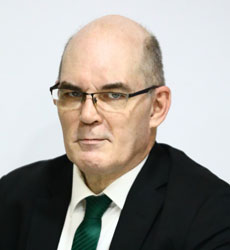UNKNOWN to most people, the Philippines' largest city is not found in congested Metro Manila in Luzon, but rather in southern Mindanao. Covering 2,443 square kilometers that encompasses everything from highly urbanized land, to coastal areas, to vast stretches of agricultural land and natural areas, Davao City is the biggest city by land area in the Philippines, and the third-largest (after Quezon City and Manila) by population, estimated at more than 1.6 million. In fact, with an annual population growth rate of 2.25 percent, almost double the national average of 1.35 percent, Davao could surpass Manila in size within the next few years, according to current projections.
Although for most Filipinos Davao is most noteworthy for being the hometown of President Rodrigo Duterte, who served as the city's mayor for a total of 27 years before being elected as president in 2016, Davao has long been considered an attractive, and for some, a superior alternative to increasingly congested and costly cities such as Metro Manila and Cebu. The track record of development in Davao that boosted the popular and sometimes controversial former Mayor Duterte – the office is now held by his daughter and current vice-presidential candidate, Sara Duterte-Carpio – to national prominence and eventually the presidency, is reflected in the city's well-planned and rapidly-growing infrastructure, transportation, logistics, business process management-information technology (BPM-IT), agribusiness, and tourism sectors.
Continue reading with one of these options:
Ad-free access
P 80 per month
(billed annually at P 960)
- Unlimited ad-free access to website articles
- Limited offer: Subscribe today and get digital edition access for free (accessible with up to 3 devices)


